Got a Hot, Humid Landscape? Add Tropical Flair With Air Plants
Air plants are unique, because they occupy an ecological niche in the treetops of the forest. Because of this special place in the ecosystem, they provide habitat and food to beneficial insects, which then become food for birds. Adding air plants to your tree trunks and garden walls will add a layer of lush greenery and bring more wildlife to your yard.
The Spanish moss that hangs from live oak trees (Quercus virginiana) in the U.S. South is an air plant, and its presence is an indication that you may be able to grow other air plants with ease. The warm and humid southeastern U.S., from the Carolinas south to Florida and west to coastal Texas, is a great region for growing these plants that hail from the tropical rain forest canopy.
Air plants have gained popularity over the past few years, and many species are now commercially available. Here you’ll learn about these amazing plants and how to integrate them into your landscape.
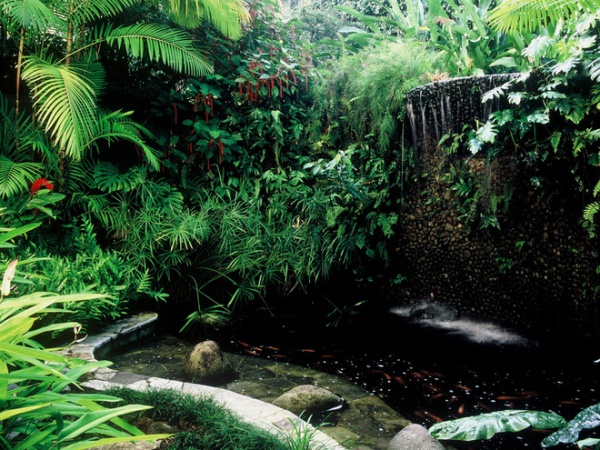
What are air plants? Plants that grow in the canopy of trees are uniquely adapted to shaded conditions and high relative air humidity. They have morphological characteristics that help them survive in the treetops: aerial roots and tiny fibrous hairs that catch nutritious particles in the air. The native habitat of most air plants —technically called epiphytes — is in the canopy layer of warm, humid hardwood forests. Air plants do not harm their host plant; they simply use trees as structural support as they sit and absorb water and nutrients from the surrounding air.
Epiphytes are also great plants for integrating into living walls. All they require is a place to attach to, filtered sunlight and humidity. Epiphytic ferns are beginning to establish on the waterfall’s vertical surface in this photo.
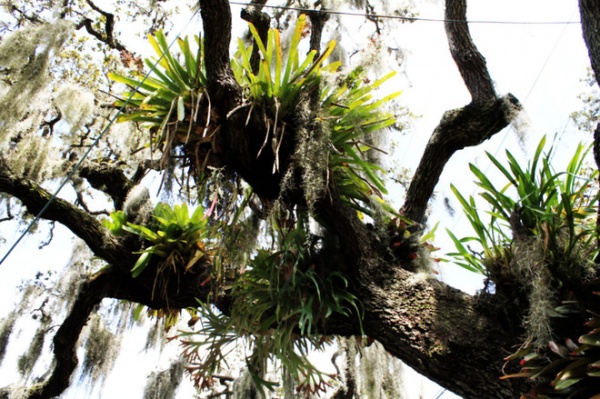
Types of Air Plants
Bromeliads. Both pineapples and Spanish moss are in the bromeliad family of plants. The major difference is that pineapples require soil to grow (a terrestrial plant) and Spanish moss requires no soil to grow, because it is an epiphyte (an air plant).
There are several species of epiphytic bromeliads in the Tillandsia genus. They are also the most common air plants used in home decor:
Giant airplant (Tillandsia utriculata)Cardinal airplant (Tillandsia fasciculata)Ball moss (Tillandsia recurvata)
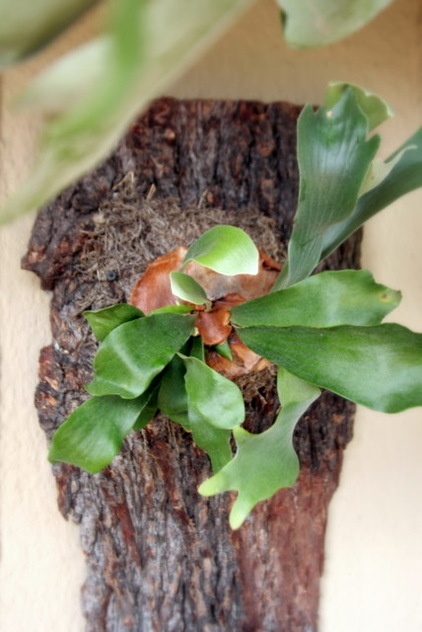
Staghorn ferns. Staghorns consist of several species within the Platycerium genus. P. bifurcatum, an Australian native, is the most widely available species. It is grown in the Southeast and in California as a specimen plant mounted on walls of gardens and interiors. The plants are best mounted onto a porous surface — like wood or lava rock— to give their sterile fronds at the base room to spread and cover the roots. The fertile fronds are antler shaped and extend from the base of the plant.
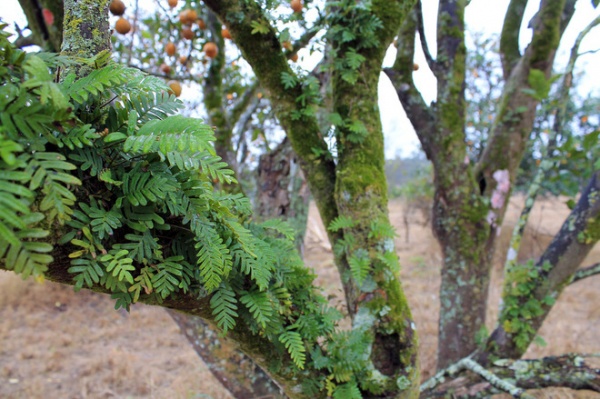
Resurrection fern (Pleopeltis polypodioides) is a native found throughout the Southeast. It is also commonly called miracle fern. It embeds itself into the bark of hefty tree branches, usually in the shade of large live oak trees, and curls up when dry. Then, miraculously, the curled fronds will resurrect themselves in response to rain. The resurrection fern in this photo is on an orange tree in central Florida just moments after an afternoon shower.
Native resurrection ferns can be purchased at local botanical gardens or through mail-order catalogs.
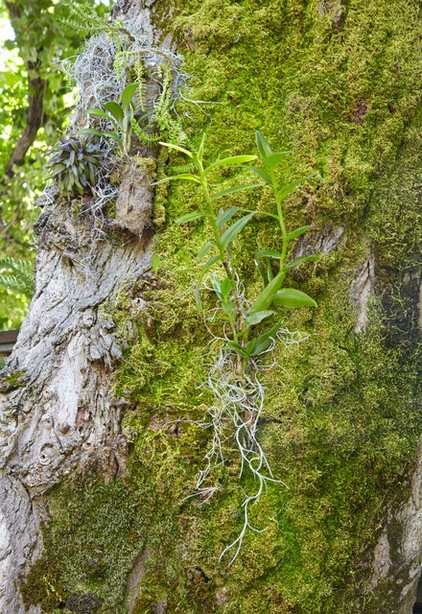
Orchids. Like bromeliads, there are plants in the orchid family that are air dwelling or soil dwelling — and some orchids are rock dwelling. The endangered native Florida ghost orchid (Dendrophylax lindenii) is an epiphytic orchid that roots into tree bark and sprouts its mysteriously beautiful and long white flower.
Several species of epiphytic orchids are more commonly available:
Green-fly orchid (Epidendrum magnoliae)Florida butterfly orchid (Encyclia tampensis)Moth orchids (Phalenopsis spp)Corsage orchids (Cattleya spp.)
Spend some time looking at the array of orchids and you will become obsessed with their beauty.
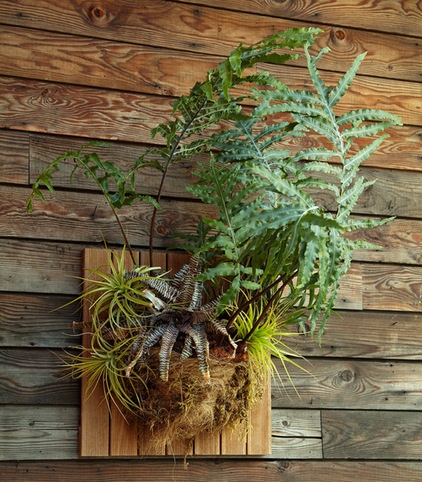
How to Grow Air Plants Outside
Mounted to a board or tree branch. Small, young air plants are best attached to wooden boards or tree trunks for outdoor use. Mounting small plants to a board helps you keep an eye on them as they grow and establish. Choose your surface — tree trunk, porous wall, driftwood or lava rock — just make sure that the surface is freely draining and has some cracks and crevices where the aerial roots can easily anchor. If you’re using wood, it must be untreated, because chemicals in treated wood may kill the plant over time. Prep your air plant by plunging it into lukewarm water and set the plant aside to drain. A good soaking sets the plant up for growth and establishment. Gently loop noncopper wire or plant tape around the base of the plant and thread it around the mounting surface. Hide the plant tape or wire by attaching spaghum moss or coconut fiber.
Epiphytes will thrive in a humid climate outdoors when placed in a high location — on a wall or tree trunk —because this mimics their native environment. Epiphytes in bowls or containers are better suited for indoor use.
Read more on how to use air plants indoors
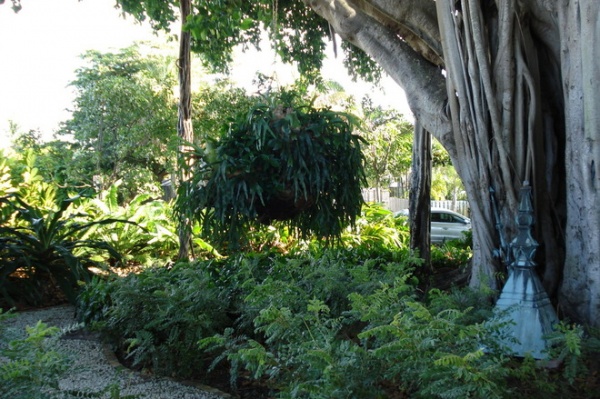
Suspended. Air plants — especially the really large staghorn ferns — can be suspended from a tree canopy by a rope or chain, as long as the plant is in full to partial shade. The plants will grow into a mass, like the staghorn fern hanging on a chain pictured here.
To create a suspended mass of air plants, first choose a partially shaded site, like underneath a strong, mature shade tree. Then pick out a chain or threaded steel cable from your local hardware store that can support at least 100 pounds — yes, the amazing staghorn fern can become very heavy when mature. You will also need S-hooks to secure the ends of the chain. Loop your chain over a sturdy tree branch and secure it with the S-hook at the top. Use a clump of epiphytes that are already mounted to a board and simply install eye hooks into the board to hang the entire piece from your chain. Using plants that are already board mounted is the easiest method for suspending your plants, because you won’t disturb the root ball. Another way to hang your clump of plants is by wrapping the root ball with wire and attaching a hook to suspend it from the end of the chain.
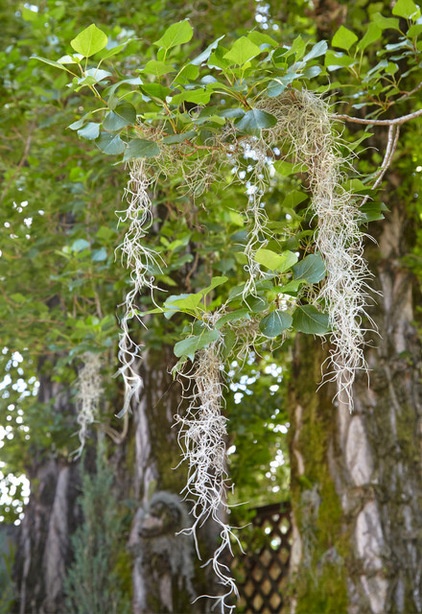
Shopping for Air Plants
Look for native air plants. Epiphytes are a specialty plant that may not show up in a search for local natives; rest assured, there are some species of native epiphytic ferns, orchids and bromeliads that thrive in the hardwood forests of the Southeast. Most of them are concentrated in Florida, which is home to 85 species of native epiphytes.
Spanish moss, pictured here, drapes down from tree branches and grows throughout the Southeast. With enough humidity and a place on which to perch, it will establish quite well.
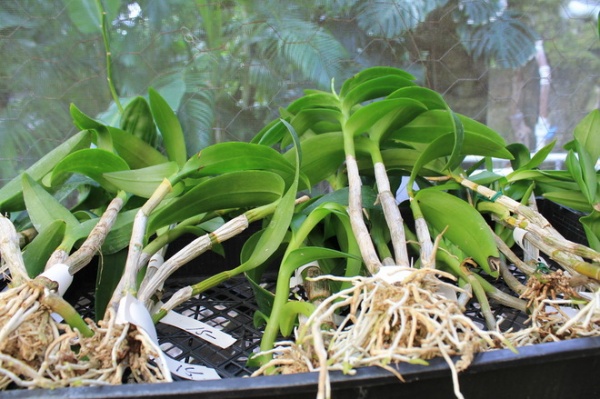
Always source sustainably grown plants. Air plants have become trendy in the interior design market, with online sellers promoting their air plants at too-good-to-be-true prices. Air plants are a hot item with a high propensity for commercial exploitation, so always purchase plants from a reputable buyer who grows nursery stock legally and sustainably.
Do not purchase plants that have been collected from the wild. Also, don’t collect your own plants from the wild. Botanical gardens and epiphytic plant societies are great places to start.
Search for your local bromeliad or orchid society. These groups often have plant exchanges among members who propagate their own plants and are happy to trade or share them. The bare-root orchids pictured here are for sale in the greenhouse of Selby Botanical Gardens in Sarasota, Florida.
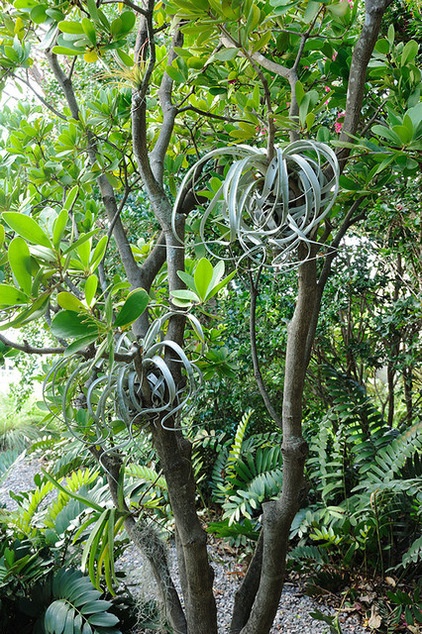
How to Care for Your Air Plants
Air plants are a delightful addition to the garden because they add lush texture without much maintenance. If sited well in dappled shade among the treetops in a warm, humid climate, your air plants will grow and thrive outdoors with little care.
Air plants appreciate a monthly dip in a bucket of water if grown indoors. If your climate is sufficiently humid, you don’t need to give your plants a bath. If the weather is dry, I recommend giving them a drenching mist with a spray bottle at least two to three times a week.
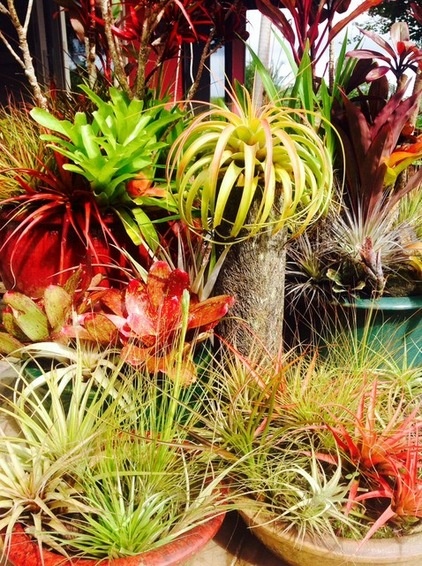
You can also spray plants with a fish emulsion once per month during the summer to increase blooms and growth. Don’t overdo it with watering or fish emulsion, because air plants are adapted to getting what they need from the air alone.
Consider water and fertilizer as supplemental ways to increase the vitality of your air plants. Some of the colorful bromeliads, like the ones pictured here, will develop a richer color with the spraying of some nutrients.
More: Lay of the Landscape: Tropical Garden Style












